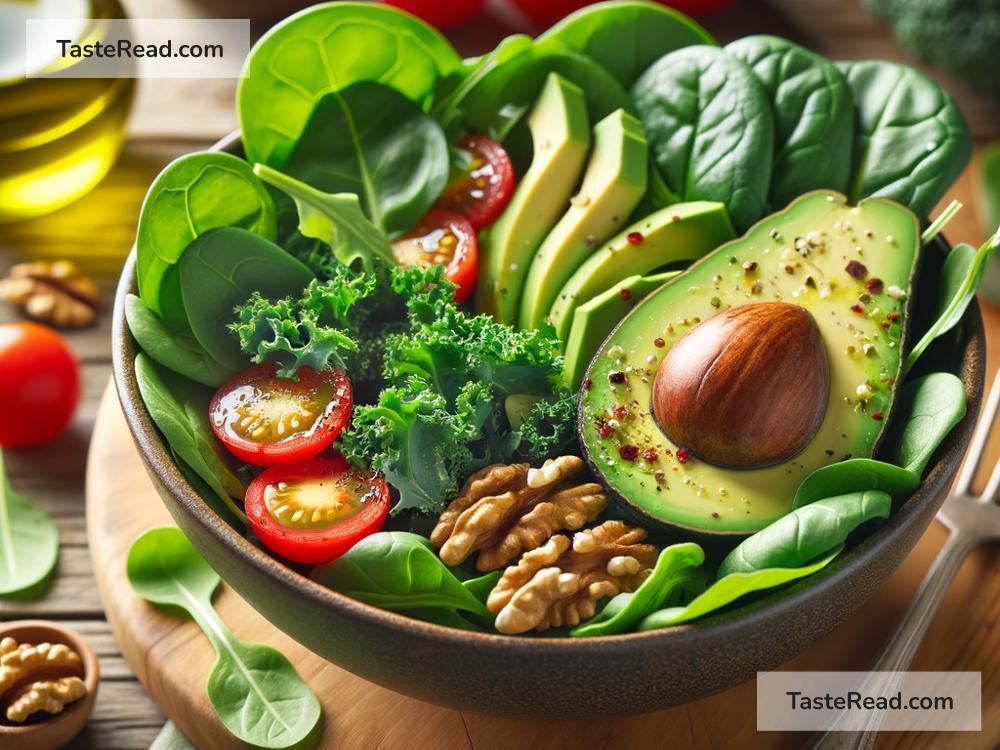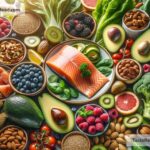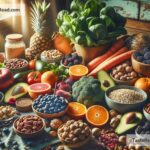Foods That Improve Heart Valve Function
Your heart is a hardworking organ that pumps blood and keeps your body running. Within your heart, there are valves that control blood flow, making sure it moves in the right direction. To keep your heart valves healthy and strong, your diet plays a crucial role. The food you eat can directly impact your heart’s health, protecting your valves from damage and helping them function properly. In this blog, we’ll explore simple, natural foods that can improve heart valve function and promote overall heart health.
Why Heart Valve Health Matters
Your heart valves act like gates, opening and closing to let blood flow efficiently between the heart’s chambers. When these valves don’t work properly, it can lead to serious health problems such as valve disease, irregular blood flow, or even heart failure. While genetics, age, and medical conditions can contribute to valve issues, your diet can also play an important role in maintaining their health. Eating the right foods can reduce inflammation, improve blood flow, and provide the nutrients your valves need to stay strong.
Foods That Improve Heart Valve Function
Let’s take a look at some of the best foods that support heart valve health. These are easy-to-find, natural foods that you can incorporate into your daily meals.
1. Leafy Greens (Spinach, Kale, Swiss Chard)
Leafy green vegetables are excellent for heart health. They are packed with vitamins such as vitamin K, which helps regulate blood clotting and supports valve function. They’re also rich in nitrates, which improve blood flow and reduce blood pressure—factors that directly benefit your heart and its valves.
- How to Enjoy: Add spinach to a morning smoothie, use kale in salads, or sauté Swiss chard as a side dish.
2. Fatty Fish (Salmon, Mackerel, Sardines)
Fatty fish is a great source of omega-3 fatty acids. These healthy fats are anti-inflammatory and promote optimal blood flow by lowering triglycerides and reducing plaque buildup in arteries. Less inflammation and better blood circulation mean less strain on your heart valves.
- How to Enjoy: Bake or grill salmon for dinner, or make a sardine sandwich with whole-grain bread.
3. Nuts and Seeds (Walnuts, Almonds, Flaxseeds, Chia Seeds)
Nuts and seeds are full of heart-healthy fats, fiber, and antioxidants. For example, walnuts contain omega-3 fatty acids, while flaxseeds and chia seeds are a rich source of essential nutrients like magnesium, which helps maintain a steady heartbeat. These ingredients help protect your valves from oxidative damage.
- How to Enjoy: Sprinkle chia seeds on yogurt or oatmeal, snack on almonds, or add flaxseed powder to your smoothies.
4. Berries (Blueberries, Strawberries, Raspberries)
Berries are high in antioxidants, especially anthocyanins, which fight inflammation and oxidative stress. These antioxidants can promote better blood flow and prevent damage to your heart valves. Berries are also low in calories, making them a heart-healthy treat.
- How to Enjoy: Eat fresh berries as a midday snack, mix them into your breakfast cereal, or blend them into smoothies.
5. Whole Grains (Oats, Quinoa, Brown Rice)
Whole grains contain high levels of fiber, which can lower cholesterol and improve circulation. By reducing cholesterol levels, you decrease the risk of fatty deposits building up and putting strain on your heart valves.
- How to Enjoy: Have oatmeal for breakfast, use quinoa as a base for salads, or substitute white rice with brown rice for dinner.
6. Avocado
Avocados are loaded with monounsaturated fats and potassium, which help regulate blood pressure and reduce heart strain. The healthy fats in avocados also aid in reducing cholesterol, making them an excellent choice for improving heart valve function.
- How to Enjoy: Add sliced avocado to toast, salads, or as a topping for tacos.
7. Garlic
Garlic contains compounds like allicin that have powerful anti-inflammatory and blood-pressure-lowering properties. Regular consumption of garlic can improve blood flow and reduce the risk of valve malfunction caused by high blood pressure.
- How to Enjoy: Cook garlic in olive oil for a flavorful addition to pastas, soups, or stir-fries.
8. Dark Chocolate
When enjoyed in moderation, dark chocolate can be surprisingly good for your heart. The cocoa found in dark chocolate contains flavonoids, which help lower blood pressure, improve circulation, and reduce inflammation. These benefits can ease the workload on your heart valves.
- How to Enjoy: Choose dark chocolate with at least 70% cocoa and enjoy a small square as an afternoon snack.
9. Legumes (Beans, Lentils, Chickpeas)
Legumes are rich in protein, fiber, and heart-friendly nutrients like potassium and magnesium. These contribute to better blood flow and help reduce cholesterol levels, which can improve valve function over time.
- How to Enjoy: Add beans to soups, create a chickpea salad, or make lentil curry for a hearty meal.
10. Olive Oil
Olive oil is rich in monounsaturated fats and antioxidants. It helps reduce inflammation and supports healthy cholesterol levels. Using olive oil in cooking can improve your heart’s overall function, including its valves.
- How to Enjoy: Use olive oil as a salad dressing base, drizzle it on vegetables, or cook with it instead of butter.
Final Thoughts
Maintaining heart valve function starts with making simple, healthy choices in your diet. By including foods like leafy greens, fatty fish, nuts, seeds, berries, and whole grains, you’re giving your heart the nutrition it needs to stay strong. And remember, eating well is just one piece of the puzzle—regular exercise, stress management, and regular check-ups with your doctor are also key to a healthy heart.
Start small by adding a few of these heart-friendly foods to your meals each day. Over time, your heart valves—and your overall health—will thank you!


